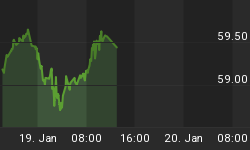The decoupling in the correlation between the price of gold and the value of the US dollar is drawing increased interest, along with differing explanations. This week, the US dollar price of gold hit 3-month highs at $441 per ounce, while the euro price of the metal surged to an all time high at EUR 361 per ounce. Unlike in "ordinary times" when the dollar showed a near perfect negative correlation with gold, today the relationship has dissipated markedly. Over the past 6 months, the dollar-gold correlation stood at -0.68. Between May and Mid June, the correlation weakened to -0.49. Over the 3-week-period ending in June 17, the correlation turned around to +0.51 (as shown in the charts below).


So why is the dollar moving in tandem with gold?
Many have started pointing out the emerging growth concerns in the Eurozone and the ensuing dissent over a single EU budget as the key attributes to the euro's tumble against the metal and the greenback. More importantly, the euro's woes against the metal have been blamed on the euro's increased role as a safe haven currency, substituting the US dollar for this role. Thus, when gold rises, traders end up punishing its safe haven competitor from the Old Continent instead of that from the New World. As for the dollar's decline against gold, it's mainly a result of the deteriorating external situation in the US as we have in through the last capital flow reports, which failed to cover the trade deficit.
But the most straightforward explanation remains the global decline in yields. As interest rates - or the value of money - falls throughout, investors seek precious metals as an alternative of higher return on their investments. With US 10-year yields at 2-year lows and the spread between the 2 and 10 year yields at a 5½ year low of 30 basis points, investors see no real payoff justifying the risk factor from the additional time duration of longer maturities. The drop in 2-10 year spreads is also another way of looking at the flattening yield curve. Should the flattening of the curve begin to turn into an inversion shape, the term "recession" could become the next buzzword next to the "housing bubble". That is because inverted yield curves have effectively presaged economic downturns. The last time we had an inverted US yield curve was between March and December 2000, just a few months prior to the short-lived recession of 2001.
As long as the low yield conundrum continues in the bond market, so will the relative decoupling between the US dollar and Gold prices. Currency traders can continue to seek the extra yield from the Commodity currencies of Australia and Canada against the Swiss Franc and to a lesser extent the British pound. The EURUSD play remains largely to the mercy of Fed policy and to a lesser extent the Budget dissent in Brussels. Back in February 2 we held that "we continue to expect the Fed to stick to its "measured" tightening until the Fed funds rate reaches the 3.25%, at which point we believe increased signs of a peaking will result into a pause." As long as this possibility remains tenable, EURUSD is likely to find considerable support at $1.18. A halt in the Fed's tightening can slow the dollar's gains, but is unlikely to trigger any considerable selloff against the euro in the near term as long as the EU remains disunited.















